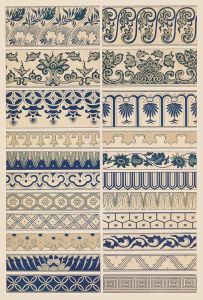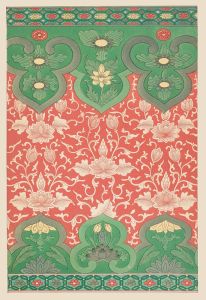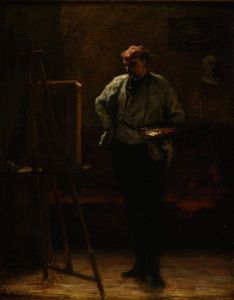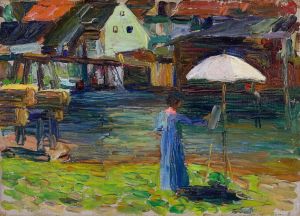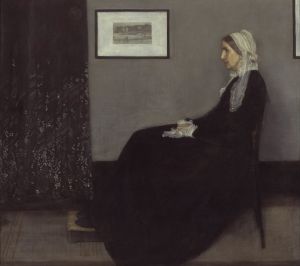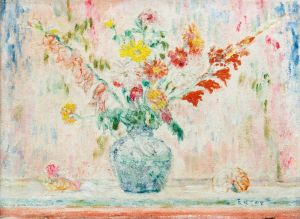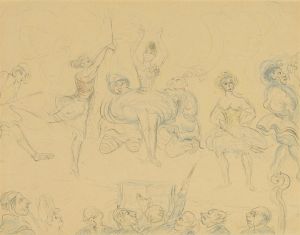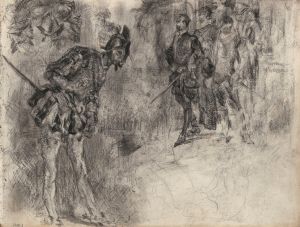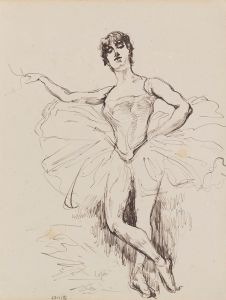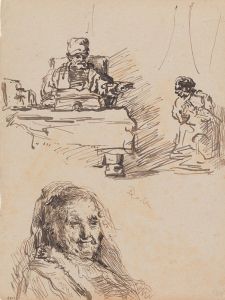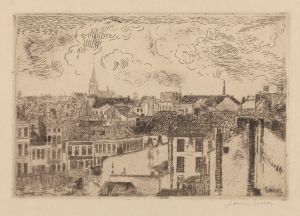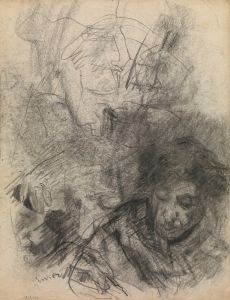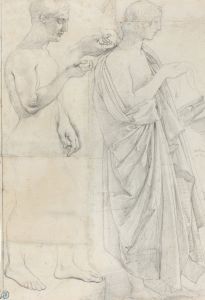
The Painter Jean François Millet
A hand-painted replica of James Ensor’s masterpiece The Painter Jean François Millet, meticulously crafted by professional artists to capture the true essence of the original. Each piece is created with museum-quality canvas and rare mineral pigments, carefully painted by experienced artists with delicate brushstrokes and rich, layered colors to perfectly recreate the texture of the original artwork. Unlike machine-printed reproductions, this hand-painted version brings the painting to life, infused with the artist’s emotions and skill in every stroke. Whether for personal collection or home decoration, it instantly elevates the artistic atmosphere of any space.
James Ensor's painting The Painter Jean François Millet is a work created by the Belgian artist James Ensor, who is widely recognized as a key figure in the transition from 19th-century realism to 20th-century expressionism and surrealism. Ensor, known for his eccentric and imaginative style, often incorporated satirical, grotesque, and fantastical elements into his works. This particular painting, however, stands out as a tribute to the French painter Jean-François Millet, a leading figure of the Barbizon school and a pioneer of realism in the mid-19th century.
Jean-François Millet (1814–1875) was renowned for his depictions of rural life, particularly his empathetic portrayals of peasants and agricultural laborers. His works, such as The Gleaners and The Angelus, celebrated the dignity of hard work and the connection between humanity and nature. Millet's influence extended far beyond his lifetime, inspiring numerous artists, including Vincent van Gogh and, evidently, James Ensor.
In The Painter Jean François Millet, Ensor pays homage to Millet, though the exact date of the painting's creation is not widely documented. The work reflects Ensor's admiration for Millet's artistic achievements and his role in elevating the status of rural subjects in art. While Ensor's own style is often characterized by vibrant colors, dramatic compositions, and a sense of theatricality, this painting demonstrates his ability to engage with the legacy of another artist in a thoughtful and reverent manner.
The painting is notable for its departure from Ensor's more typical themes of satire and social critique. Instead, it focuses on the figure of Millet, possibly portraying him in a contemplative or creative moment. The composition and style of the work may also reflect Ensor's interpretation of Millet's artistic philosophy, emphasizing simplicity and a deep connection to the human condition.
As of now, detailed information about the painting's provenance, current location, and specific stylistic elements remains limited in publicly available sources. However, the work is an important example of Ensor's engagement with art history and his recognition of the contributions of earlier masters like Millet.
This painting serves as a testament to the enduring impact of Jean-François Millet on subsequent generations of artists and highlights James Ensor's versatility as a painter capable of both innovation and homage.





